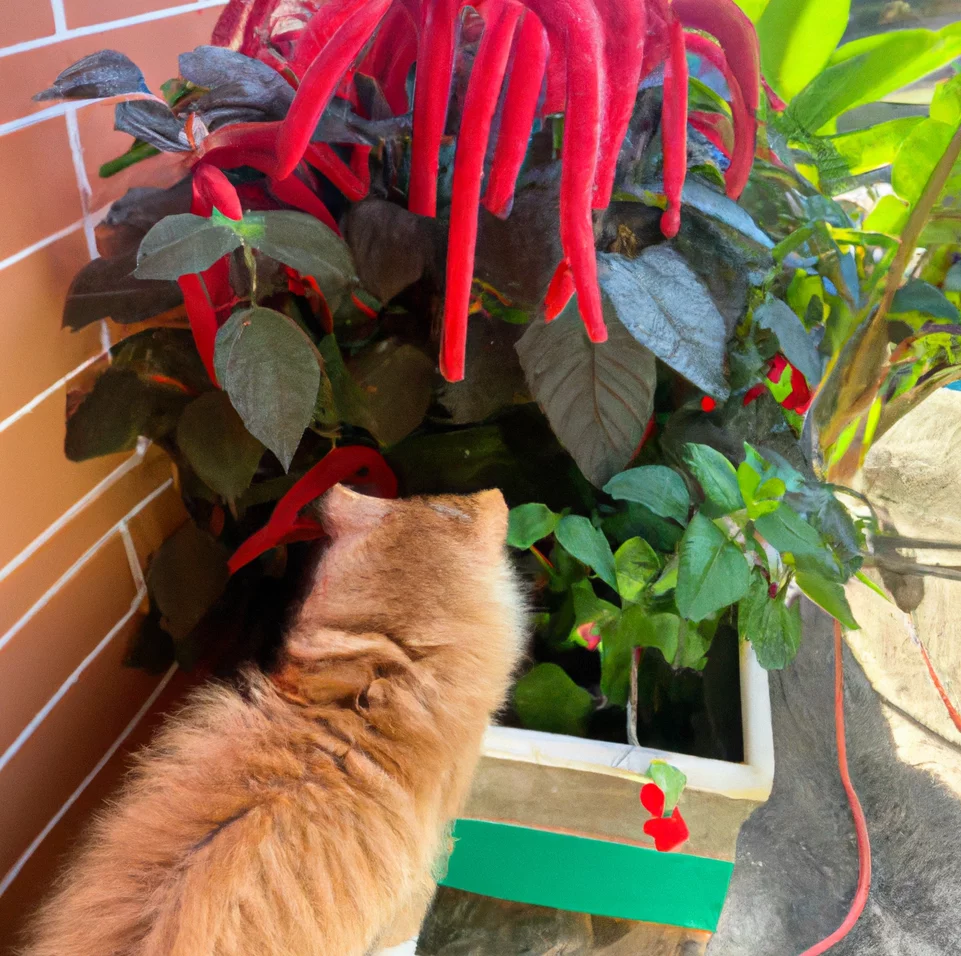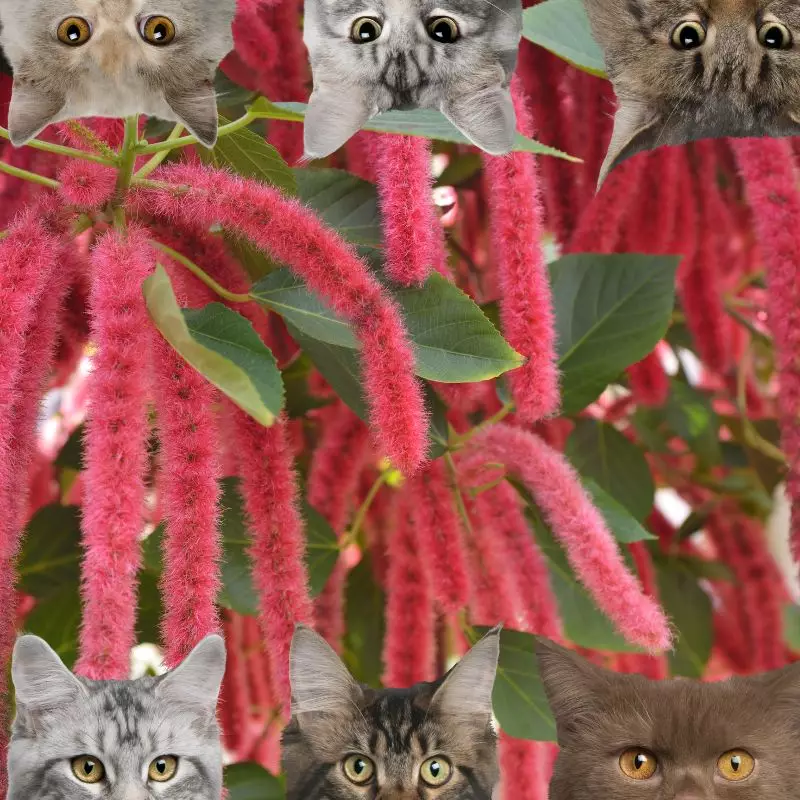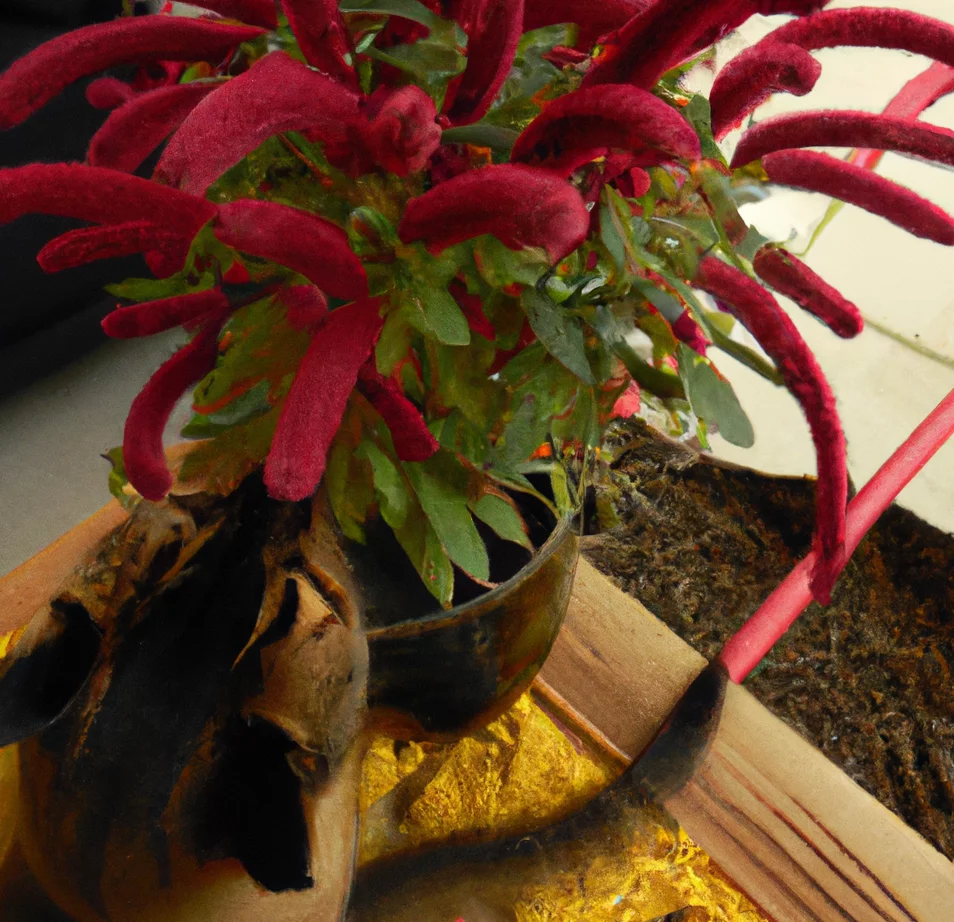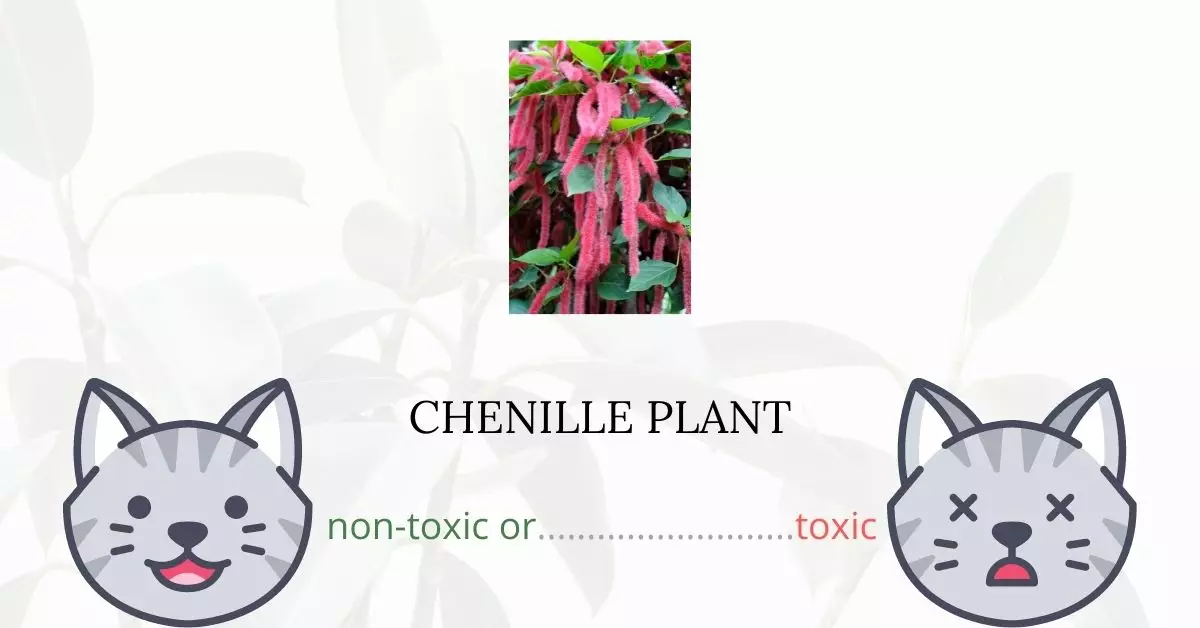The Chenille Plant is non-toxic to cats. It is also safe for dogs and horses, as verified by the American Society for the Prevention of Cruelty to Animals (ASPCA).
This article has been meticulously crafted in collaboration with a team of experienced DVMs (doctors of veterinary medicine). Through their expert contributions and our comprehensive research from high-authority websites such as ASPCA and PetMD, we aim to provide accurate and up-to-date information regarding the potential risks and safety of various plants, with a specific focus on the Chenille Plant in this instance.
While the Chenille Plant poses no threat to cats, it’s noteworthy to mention that it can be somewhat harmful to humans.
Can Cats Eat Chenille Plant?

Your cat can safely touch, lick, or munch on a chenille plant. Felines will not experience adverse effects when they ingest a part of the chenille plant. However, you should always remember that cats should not regularly feed on plants.
Plants can cause indigestion in cats. This is because they are carnivores and their bodies do not have enough enzymes that can process plant materials in their stomach. Eating large portions of plants (of any kind) may cause them to suffer from mild vomiting and diarrhea.
It is also essential to consider using of chemicals on plants such as commercial fertilizers, insecticides, and deterrents. Residues of these products can affect your cat in case they have eaten a plant wherein these products were used.
What is Chenille Plant?

The chenille plant, technically known as Acalypha hispida, is a Euphorbiacea family flowering shrub. The Philippine medusa, Red Hot Cat Tail, Bristly Copperleaf, and Foxtail are all names for it. It is planted as a house plant due to its beauty and brightly colored, fuzzy flowers. Hispida is a Latin name that means “bristly,” referring to the pendent flowers that seem like brushes.
The chenille plant may grow to be 5 to 12 feet tall and 3 to 6 feet wide, with potted plants being the shortest in size. Because of the nature and color of its blossoms, the plant has been slightly tamed. It may be produced from both seeds and cuttings. It may be kept as either an outdoor or indoor plant.
It thrives as an indoor plant or in a container on a patio or rooftop garden that can be taken inside for the winter. It demands bright light but not direct sunlight when cultivated as a house plant, as well as high humidity and a temperature of at least 61 °F (16 °C). It should be planted in loose potting soil rich in organic matter and sand, and it should be maintained properly hydrated throughout the spring and summer.
Keeping Cats Away From Chenille Plant

Cats should be trained to stay away from plants. It is best to start this training at home by teaching them to not go near your house plants. You may do this by spraying water at them when they try to get near your plants. Remember that they should associate the water with the plants and not with you.
You may also use natural deterrents such as bitter apple or vinegar. You may dilute the vinegar onto the water and spray it on your plants. This will make the plants unpalatable for them and thus, will make them avoid nibbling on them.
Plants to Avoid For Your Cats
If you are a cat owner and unsure if the plants growing in your yard are harmful to your cats, check out this list of toxic plants for cats. You can also check our list of non-toxic plants for cats.





